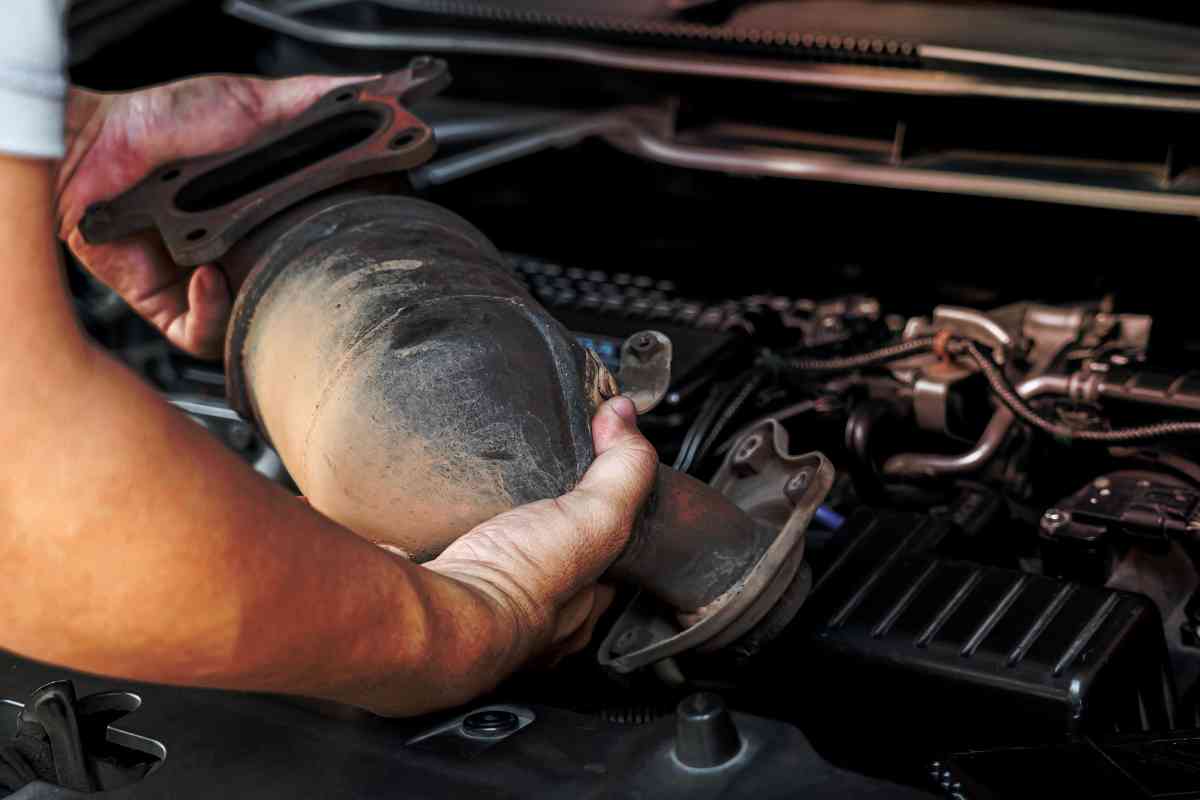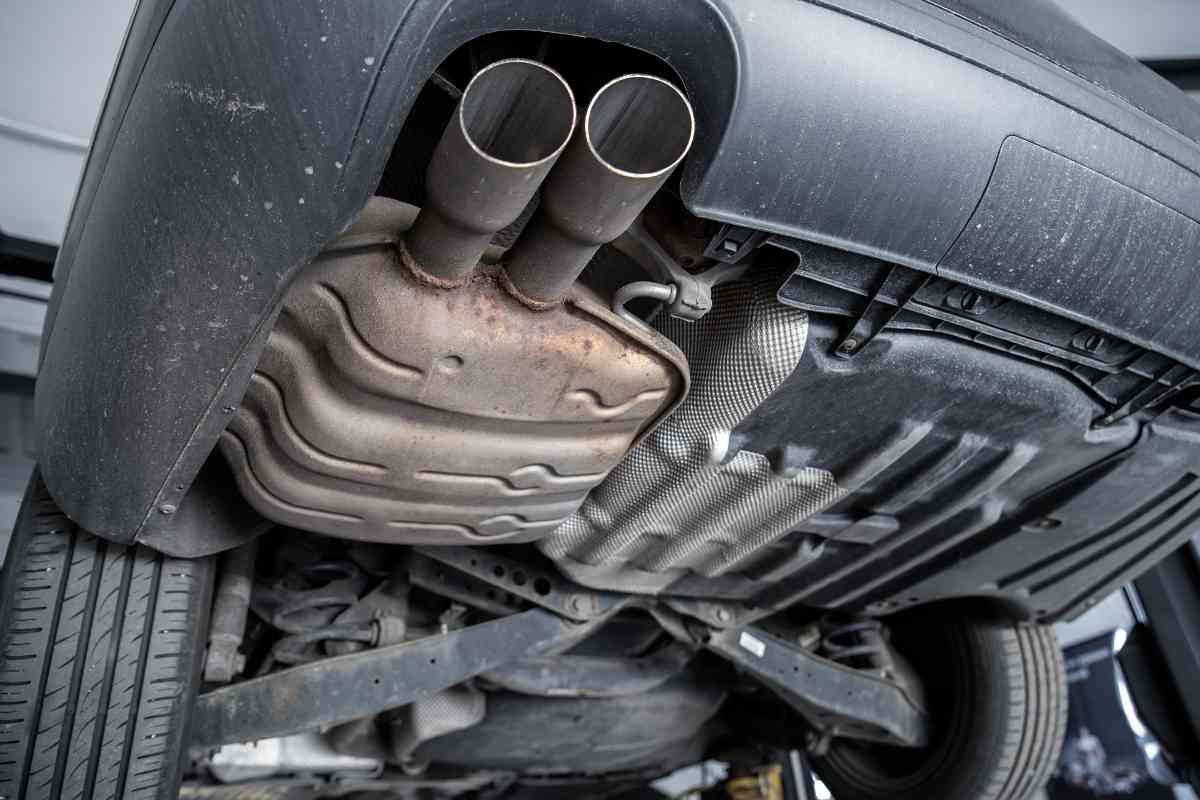Can A Bad Catalytic Converter Cause Evap Leak?
The work of the catalytic converter is to convert toxic fumes into exhaust gasses from your car. Can a bad catalytic converter cause Evap leak?

Can a bad catalytic converter cause Evap leak?
A bad catalytic converter won’t cause an Evap leak in your car. This is because canisters are located in the Evap emission system. This will become faulty because prolonged use in your car eliminates awful fumes.
We spoke with auto repair experts about the relationship between a catalytic converter and an Evap system. The goal was to determine if a faulty catalytic converter could lead to an Evap leak.
What is an Evap Leak?
Have you ever encountered a check engine light with no indication of what’s wrong with the vehicle? At times the light comes on because there’s an EVAP leak in the vehicle.
Every vehicle contains the EVAP emission control system. This is all to make cars eco-friendlier by cutting down on carbon emissions. The EVAP (Evaporative Emissions Control System) system keeps all this awful stuff from the atmosphere.
Now, this only works when the entire system is leakproof. If there’s a leak, this can be an issue, and it’s best to address it pronto. It’s a recommendation that all modern vehicles have a fully functional and leak-free EVAP system.
So, how can you tell if there’s a leak in your car? Well, the check engine light will tell you there’s a problem that needs your immediate attention. It’s not possible to smell the leak, but an expert at an auto shop will be able to diagnose the problem.
While driving your car with an Evap leak is safe, you shouldn’t do so. This is because the car continues to release harmful emissions that harm the environment. One way to ensure you don’t experience lasting leaks is to carry out regular vehicle maintenance.
Can a Bad Catalytic Converter Cause Evap Leak?
No, a bad catalytic converter won’t lead to an Evap leak. In fact, Evap leaks have no relation to issues you experience with the catalytic converter.
The converter is part of the vehicle’s exhaust system and is important for the car. It requires a chemical reaction to eliminate pollutants in the form of exhaust gas.

How Do You Diagnose an Evap Leak?
The check engine light comes on for different reasons. One of them is an Evap leak which means your car is leaking emissions into the atmosphere. If you suspect this is the case, head to an auto shop for full diagnostics.
Your car’s Evap System stores what is known as DTC (Diagnostic Trouble Code). These are kept in the system’s memory and can help explain the different situations.
The primary vehicle DTCs include:
- P0440- EVAP
- P0441- EVAP – Incorrect Purge Flow
- P0442- EVAP – Small Leak Detected
- P0455- EVAP – Gross Leak Detected
- P0456- EVAP – Very Small Leak Detected
- P0457- EVAP – Fuel Cap Loose/Off
- P1440- Purge Valve Stuck Open
- P1442- EVAP – Leak Detected
- P1443- EVAP – Control Valve Malfunction
- P1444- EVAP – Purge Flow Sensor Circuit Flow Input
There are different ways that a mechanic can test your car for an Evap leak. It takes time and effort because they will be searching for a vacuum leak. The different methods include:

Smoke Test
It’s one of the best ways to detect an Evap leak. The mechanic blows smoke on the Evap system and watches for it escaping from problem areas. These can include the hose pipe, tube, or valves.
While this is a great way to test for an Evap leak, it’s also a pricey method. The expert will need a professional smoke testing machine that can cost upwards of $500.
Apart from this high cost, there’s also the risk factor. They will be blowing smoke which will mix with flammable gasses. It’s important to take utmost precaution using this method to prevent a disaster and more repair costs.
Vacuum Test
Another method is to adapt an engine vacuum gauge for testing. The Evap system leads the way to the intake manifold. You can test the different lines and note the integrity levels.
When carrying out this test, it’s important to ensure the engine idle vacuum is set at 21 in. HG. Then, proceed to check if there’s a vacuum in the Evap system. A vacuum indicates that the purge valve is open.
What Are the Signs Of a Bad Catalytic Converter Cause?
If your car has a bad catalytic converter, it’s important to take it to the auto repair shop soon. The best way to note this issue is to watch out for the symptoms. They include:
Noisy Car Engine
Listen for an annoying rattling noise from the engine. This is a sign that it’s time to have the bad catalytic converter checked out.
Usually, this rattling noise is because of pieces rattling around inside the converter’s honey-shaped comb.
Fuel Inefficiency
Many modern cars are designed to be fuel efficient. This means you get more miles per gallon and don’t need to fuel often.
However, if you have fewer miles per hour, there might be an issue with the catalytic converter. Fixing this issue pronto is important so you won’t waste lots of fuel moving from point A to B.
Check Engine Light
Perhaps the check engine light is the first sign of something wrong with the car. The vehicle’s modern computer system can tell the levels of exhaust gasses the car produces. If these levels exceed a set level, the light comes on so you can take the car to an auto shop.
Pressure Build Up
After long-term use, it’s not uncommon for the catalytic converter to clog up. In such instances, your car gets harder to control. It tends to jerk forward and even stall out.
This indicates your car is having difficulty breathing and requires the converter to be unclogged soon. There’s even a power loss when you try to accelerate and lots of jerking.
Key Takeaways
- Most modern vehicles have an Evap system in place for emissions.
- A faulty catalytic converter won’t cause an Evap leak.
- It’s important to visit an auto shop if you suspect an Evap leak
- A faulty catalytic converter affects the performance of a car.

Will the e-vape problem ruin the engine? Can you also Uninstall the Catalitic converter to?